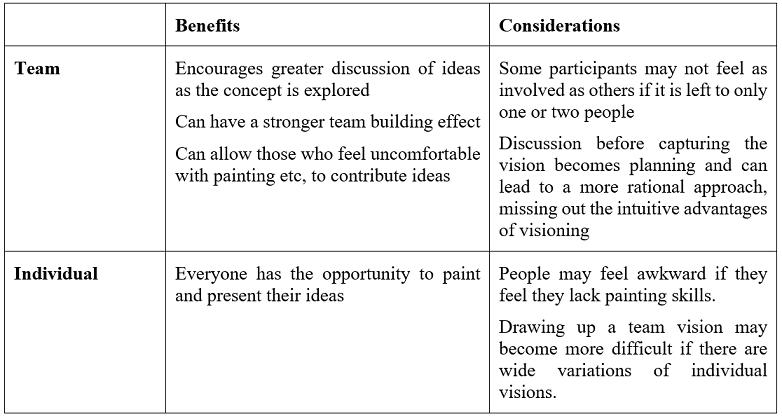
Painting is just another way of keeping a diary
Pablo Picasso
I rather like this quote by Picasso as it presents something artistic such as painting in a more rational context, i.e. keeping a diary. It demonstrates an interesting application of an artistic process.
I want to share with you how I’ve used artistic processes to help teams solve problems and imagine a different future. It’s a process that may bring back, memories from your childhood. I hope these memories are full of experimentation and play. The goal of the exercise is to think in a different way. While the definition of art as described by Google Dictionary has two parts:
the expression or application of human creative skill and imagination, typically in a visual form such as painting or sculpture,
producing works to be appreciated primarily for their beauty or emotional power.
The goal of this exercise is focused more on the first part of the definition, applying imagination. It’s not to produce something traditionally considered beautiful. However, it’s entirely likely that when you apply your insights, you or your team will create something powerful.
Where the activity fits in the Creative Problem-Solving Process (CPS)
In this blog I’ve described how with a few simple materials like paint, straws or balloons, you can encourage others to build a range of models and metaphors that describe a problem or opportunity. This process is used within the exploration stage of CPS, i.e. the first stage and is a precursor to Stage 2 which involves the generation of ideas and plans. The third step of the process is implementing the plan.
Description of activity using paint
Ask the team to look at a problem and to,
Imagine that all the barriers had been overcome and that the perfect result had been realised.
Allow the team time to discuss, brainstorm and plan what this perfect result would look like (30 minutes), and then time to paint it (60 minutes).
Later, a spokesperson (or two) from the team then explains the meaning of the painting. Each team should have five minutes to present and five minutes to answer questions.
People can amaze you when they are given permission to represent their ideas creatively.
Benefits of doing the exercise individually verses as a team
This vision exercise can be done individually or as a team effort. The table below may be helpful in deciding on approach. This would apply whether the process involved painting, drawing or developing a vision through another medium such as collage.

Resources needed for painting
Large canvas
Paint, paint brushes and trays
Easel to hold canvas
Ground sheets if painting inside (very important)
Camera/Video
Participants to bring old shirts/clothes to protect their clothing
What I am saying is that we need to be willing to let our intuition guide us, and then be willing to follow that guidance directly and fearlessly
Shakti Gawain
References
Creativity Cycling: Help your team solve complex problems with creative tools by Barbara Wilson and Tracy Stanley 2018
The Artists Way, Julie Cameron 2016